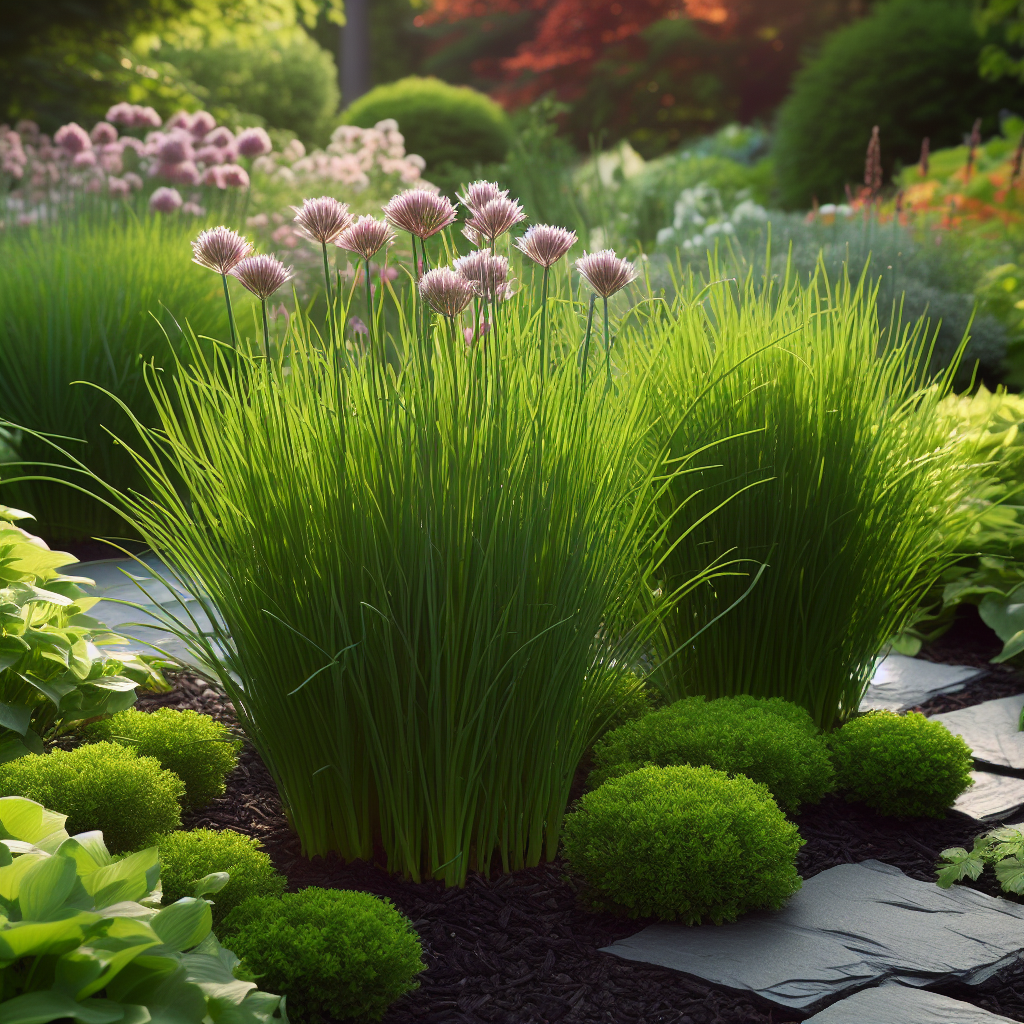Garlic chives (Allium tuberosum) are a delightful perennial herb that brings both culinary flair and ornamental charm to your garden. In this comprehensive guide tailored for hobbyist gardeners, we’ll delve into the intricacies of cultivating garlic chives, exploring their botanical features, diverse uses, and valuable tips for a thriving harvest.
Botanical Overview
- Botanical Name: Allium tuberosum (Syn. A. odoratumi)
- Common Names: Garlic chives, Chinese chives, Kau tsoi
- Family: Alliaceae
Plant Description
Garlic chives form compact clumps with slender, grass-like leaves, typically reaching a height of no more than 25 cm. Each bulb comprises 4 to 5 flat leaves, approximately 0.5 cm wide, offering a mild garlic flavor. The plant blooms with flat-headed sprays of star-shaped white flowers, emitting a pleasant perfume. Noteworthy for their adaptability, Chinese chives thrive in a variety of soil conditions.
Uses
- Culinary Delight: Chopped garlic chives elevate the flavor of sauces, soups, salads, and various dishes. To preserve their tenderness, add them in the final minutes of cooking.
- Ornamental Appeal: Beyond the kitchen, garlic chives serve as decorative edging plants, enhancing the aesthetics of herb and vegetable gardens.
- Companion Planting: Garlic chives are reputed as companion plants for roses, believed to have a deterrent effect on aphids, contributing to overall garden health.
Planting Details
- Recommended Planting Time: Sow seeds in mid-spring or divide clumps during spring or autumn.
- Planting Depth: Cover rhizomes with about 2 cm of soil.
- Sowing Rate: Space plants 20 cm apart to allow for healthy growth.
- Growing Details: For clump division, trim tops, lift, trim roots, and separate rhizomes. Division every two years enhances clump vigor. Prevent seed setting unless saving seed, as it may compromise clump health. Seeds remain viable for one year.
Tips for Hobbyist Gardeners
- Harvest Regularly: Regular harvesting promotes continuous growth and ensures tender leaves.
- Avoid Seed Setting: To maintain clump vigor, prevent garlic chives from setting seed unless seed saving is intended.
- Companion Planting Strategies: Experiment with planting garlic chives strategically around roses to deter aphids and enhance the health of neighboring plants.
- Prudent Use in Cooking: Add chopped chives towards the end of cooking to preserve their delicate flavor and prevent stringiness.
A valuable addition to any hobbyist gardener’s repertoire
Garlic chives, with their delicate garlic essence and ornamental charm, are a valuable addition to any hobbyist gardener’s repertoire. Whether enhancing your culinary creations or contributing to a visually appealing garden, these versatile herbs offer a delightful experience for both the palate and the eye. By understanding their unique features and following essential tips, you can cultivate a thriving patch of garlic chives that will be a source of culinary inspiration and garden beauty.
